Updated: July 6, 2018
Time, now it's time, to test your distro again. Indeed. Fedora. I have recently taken the latest release, Workstation 28 Gnome, for a spin, and I found it rather mediocre. Overall, it was buggy, slow, and the desktop required a lot of changes to make usable, as the default configuration simply wasn't good enough. All that happened with the Gnome environment. So what about KDE?
Today, we take a Plasma spin for a spin - provided you can find it, because it takes a somewhat convoluted path to find the KDE version (a completely different domain). Roughly 1.8GB worth of data later, I booted the USB thumb drive on my dual-boot 2009 LG laptop, which comes with Nvidia graphics. If you recall, one of the new and fancy things in Fedora 28 is the simplified media and proprietary drivers handling process, and I promised I'd check this. But beyond that, I also want to see if Fedora 28 KDE can deliver better results than the standard version. To wit, let's see what gives.

Live session
The boot process was verbose and slow. The last part of the desktop loading sequence took a good two minutes to complete. Fedora uses its own desktop theme, all light blue colors and whatnot, and places the widget button on the left side, making it clash with the desktop icon(s).

Network connectivity
This was ... okay, sort. For Wireless, KDEWallet jumped BEFORE the system actually asked me to authenticate against the access point. No double-prompt bug. Bluetooth did not work with my Aquaris Android phone, so I decided to leave this particular test for after the installation. Samba sharing does not work by default, because of unnecessary security bullshit, but you can tweak this and get the needed functionality back. Printing to a Wireless device worked just fine, but not so to any Samba devices. Not a promising start at all, I must say.

Fonts
Average. While Fedora has worked some in making itself more presentable, there's still more than can be done. Default AA settings aren't good enough, and Fedora 28 KDE uses Sans Serif as the main font. This creates an odd disconnect from the Gnome version, and feels quite retro. There aren't that many fonts to choose, if you want to make a change.
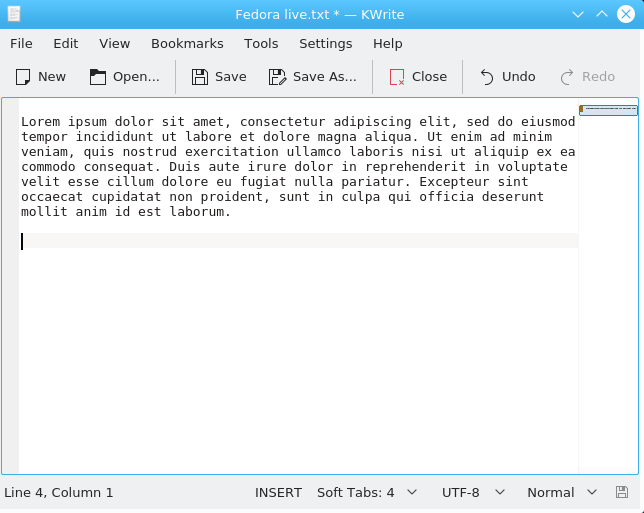
Multimedia
No problems. MP3 and HD video. The default media player is Amarok, which seems to have fallen out of grace in Plasma recently. Well, not bad, but there are some better alternatives overall. Also, it does not offer any cover art integration in the system area.

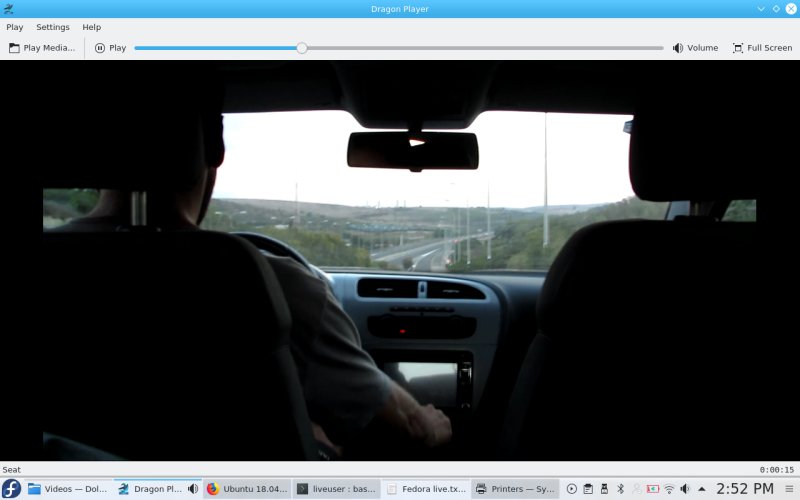
Installation
It was fast - only about 15 minutes, which is nice. If you use the Blivet partitioning tool, it's much easier to make the right choice than with the awful default (Gnome) partitioner that has been part of Fedora since version 18. Now, in contrast to the Gnome version, the user setup does not happen after the installation, and you need to configure root and your own account right there. The partitioner also tried to pull a local language trick on me, even though the keyboard was set to en-us.
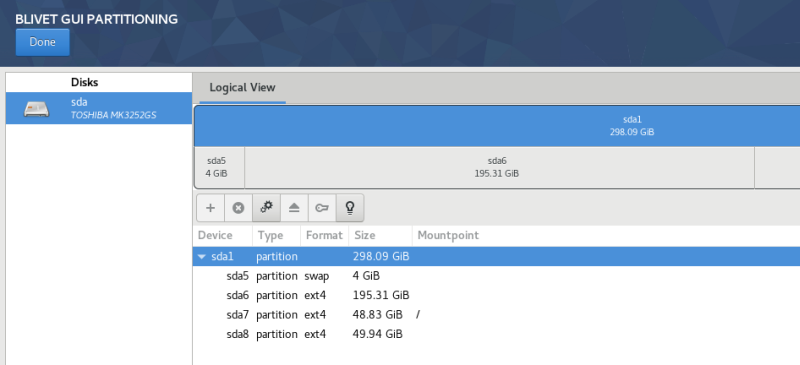
Lastly, the sad cropped slide nonsense is still there. It's been more than a month since Fedora 28 has seen light, and this issue remains. Not only is there no QA whatsoever in pretty much any Linux distro, no one bothers fixing problems, because that's boring and not fun, right, as opposed to hammering out new code commits.
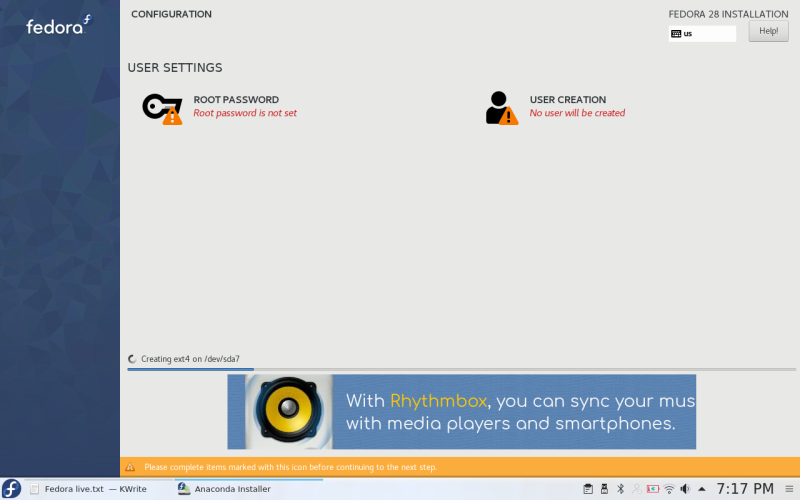
A random error popped up, but it didn't destroy anything:
Message from syslogd@localhost at Dec 31 19:24:21 ...
kernel:do_IRQ: 0.43 No irq handler for vector
Using Fedora - and failing
The boot menu did feature both operating systems - Fedora and Mint Sylvia, so no issues there. The boot process was text-free but again, very long. Also, the user setup step showed up - and quickly closed on its own, which means poor integration, because it should not have been there in the first place, or the KDE spin should have behaved like the Gnome one.
Once in the desktop, the widget-desktop-icon clash is even more apparent. No live session settings were preserved. There was no KDEWallet prompt. I am loving the consistency. It makes me all fuzzy and warm.
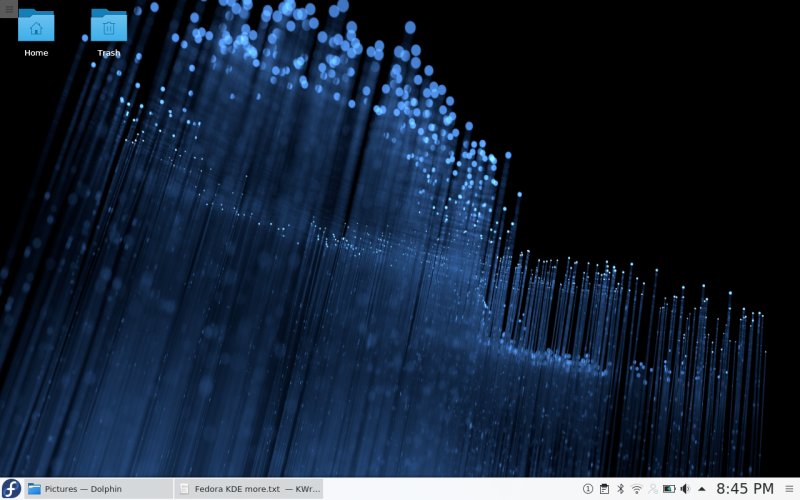
Oh yes, another thing - just as I connected to the Web, the updater threw an error:
cannot update repo 'updates': Cannot prepare internal mirrorlist: Curl error (6):
Couldn't resolve host name for
https://mirrors.fedoraproject.org/metalink?repo=updates-released-f28&arch=
x86_64 [Could not resolve host: mirrors.fedoraproject.org]
Customization
I set about making the desktop usable and pretty first thing. Overall, Plasma is quite usage-ready, but there are some things missing, like the Show desktop or Minimize all windows widget. I tried to install new icons, specifically Papirus, but the process failed using the built-in mechanism in the system settings. The desktop would also not use any icons under .icons or .config, and I had to place them into /usr/share/icons.

The system settings icon kept disappearing from the icons-only task manager on close, even though it was pinned. I changed the theme from Fedora to Breeze, as I found it nicer and more pleasing and it fixed the icon disappearance. Now, the system settings had symbolic icons only. Also, the distro icon vanished from the menu button. Of course, visually documenting all this is tedious, because Spectacle creates unnecessary shadow borders, so I had to use Gnome screenshot instead, with its associated X11 fallback errors and such. But that was the least of my problems in this process. I also spent more time fiddling with fonts. Meh.
![]()
The minimize all widget icon would occasionally stay highlighted. Odd.
![]()

Crashes
Of course, you can't have everything. A few apps crashed now and then, just to keep me on me toes.

If you want to reboot through the GUI, you can't:

More network stuff
Bluetooth. So now it worked - even though it says it failed, but I was able to send files.

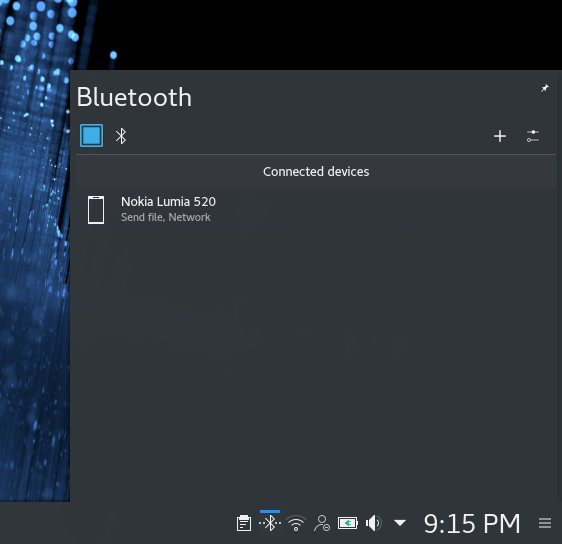
Smartphone support
Awful. I tried Android and Windows Phone, and in both cases, they failed miserably. Y'know the same thing that worked just fine in Kubuntu or openSUSE? Must be a fresh regression in MTP. Again, no validation, no testing, nothing. Just shitty life-sapping regressions. And it will just keep getting worse and worse, as long as the new-age attention-deficient crowds continue with their agile and fast bullshit fascination. I didn't bother with my iPhone, because what would be the point.


No, sorry, let me rephrase that more eloquently:
ZOMG, Linux is amazing and everything works. Best thing ever. If it does not work for you, it's your fault. You're an idiot. If it works for you, you are smart. For example, if you plug your phone into the computer, and then open the file manager, and you get a red error, this is your fault. It means you haven't read the ideology manifesto. And if you don't want to manually fix these problems, it means you are a noob and you do not understand how it works. All you need to do is chmod the man pages and udev the dev, and everything will be fine. It's so intuitive even my great-grandmother can do it, you nooblet, and she's never used a computer in her life. Pwned.
There, now everyone is happy. Let's move on.
Nvidia drivers
Now, this proved to be a total showstopper. In the Gnome edition, Gnome Software will query RPM Fusion and offer drivers. Discover does not do that - a complete divergence from the intended simple-'n'-easy mission statement. You need to manually configure the extra repos. But even then, with the repos in place, Discover still does not show any relevant Nvidia drivers. You must use the command line.


What I did was - run the EXACT same line that I used in Fedora 27 - which worked perfectly, not that the rest of the distro did, but at least this one aspect was spotless.
sudo dnf install xorg-x11-drv-nvidia-340xx xorg-x11-drv-nvidia-340xx-libs

Here, this did NOT work. A reboot later, black screen. No Nvidia module loaded. Manual startx, 4:3 VESA desktop. KDEWallet jumps now, and I was asked to provide Wireless credentials again. Dolphin wouldn't even start. All right, I've had enough.
Conclusion
I didn't get to test a lot of things - apps, hardware compatibility, performance, whatnot, but then, there's really no reason to persist. This is a failing distro, like so many others released recently. No validation, no care, nothing. Just random code. A lackluster showing with no pride or passion or quality. Fedora 28 KDE did give me media playback, but that's about the only thing that worked fine. The rest was all broken. Customization wasn't smooth, the fonts are meh, no smartphone support, mediocre network support, and then, a dead desktop after trying to install Nvidia drivers the same way that worked just fine in Fedora 27. Madness.
If you want to use Fedora for some reason, the Gnome edition is better, but it's still a rather average product and not suitable for day-to-say use. A steady decline since version 25, and I'm 100% sure this is all the result of the carefree approach to software development, the rapid release mania and the total disregard to validation and user needs. This one is a total flop. And I've just wasted a day and a half of my life. We're done.
Cheers.